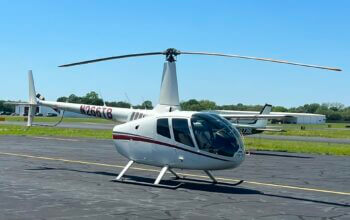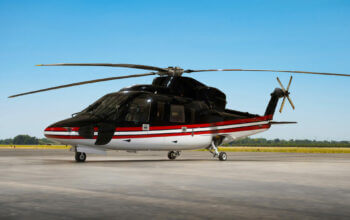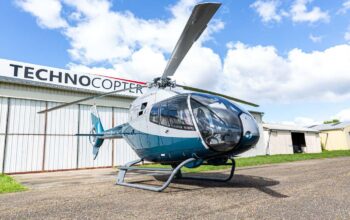Morgan Stanley is telling investors that eVTOL aircraft could ultimately represent a $9 trillion global market, but that it will likely take decades for the urban air mobility (UAM) sector to achieve its full potential.

The projections are contained in a new research paper that updates the company’s total addressable market (TAM) estimates from December 2018. Morgan Stanley’s initial report, “Flying Cars: Investment Implications of Urban Air Mobility,” predicted that the UAM market would be worth $1.5 trillion in 2040.
On the strength of the Morgan Stanley name, that figure has since become a staple of investor pitches. It was cited in U.S. Securities and Exchange Commission filings for the eVTOL developers Archer and Lilium, as well as in Wisk’s recent legal complaint against Archer for theft of trade secrets.
The base case estimate in Morgan Stanley’s new report, “eVTOL/Urban Air Mobility TAM Update: A Slow Take-Off, But Sky’s the Limit,” revises that figure downward to $1 trillion, “as we made significant reductions to our adoption curve in the early and medium-term years to allow for a greater ‘margin of safety’ given our understanding of the certification landscape in the U.S. and Europe,” the authors state.
For 2030, they reduced their U.S. TAM estimate by nearly 75 percent, from $45 billion to just $12 billion, which is less than Archer alone expects to make that year.
“Our mapping of the regulatory side suggests investors should assume ‘horizontal’ (pushed to the right) expectations of commercial introduction at least in the early years while leaving the door open for the ‘vertical’ inflection at some point in the future, which we currently assume is closer to 2040 or beyond rather than 2030,” the authors explain.
Once that inflection happens, however, they predict that eVTOL aircraft could be as transformative as automobiles were in the early 20th century and commercial airlines were after the Second World War. “Radical changes to transportation modality don’t so much ‘cannibalize’ the current/prevailing form of transport as much as totally re-invent and re-scale the size of the market itself, frequently by orders of magnitude,” they claim.
By 2050, they predict that the global eVTOL market will be worth $9 trillion — as much as 6 percent of projected global gross domestic product — in their base case, and up to $18.9 trillion (11 to 12 percent of global GDP) in their bull case.
By comparison, the automotive sector today accounts for only around 3 percent of U.S. GDP. Even in the analysts’ bear case, in which there is “mass rejection/minimal adoption of eVTOL/drone transport of goods and people,” they predict a global TAM in 2050 of $2.3 trillion, or 1 to 1.5 percent of projected GDP.
Morgan Stanley’s definition of UAM includes “transporting goods” as well as “transporting humans,” and transport/logistics missions account for 52 percent of its base case market in 2040 — up from a previously estimated share of 28 percent.
“Our view of the urban parcel delivery market is now considerably larger as we have switched our focus from last mile delivery of urban packages to end customers to middle mile delivery of urban packages from DCs to delivery stations/stores close to urban areas,” the analysts explain. “This should permit quicker and easier penetration by eVTOLs while providing a much more powerful use case than air and truck today and unlocks [an approximate] $70 billion revenue opportunity around 2040.”
The report acknowledges that Morgan Stanley is not a wholly objective observer of the eVTOL market. Because the company “does and seeks to do business with” companies covered by its research, the firm may have conflicts of interest, and “investors should consider Morgan Stanley Research as only a single factor in making their investment decision,” it states.
The paper also contains some incomplete, inaccurate, and outdated information that raises questions about its authors’ understanding of the UAM landscape. For example, it states that “companies such as Uber Elevate are constantly in contact with regulators to ensure a smooth transition from helicopters or airline flight today” to large-scale eVTOL operations, even though Uber Elevate was acquired by Joby Aviation last year.
In addressing the safety advantages of eVTOL aircraft, the report claims that “the number one cause of helicopter accidents today is engine failure,” which is demonstrably false. Research by the International Helicopter Safety Team and U.S. Helicopter Safety Team has shown that accidents due to engine failure are much less common than accidents due to other factors such as loss of control, which is a safety issue that the eVTOL industry is attempting to address through greater autonomy.
A Morgan Stanley spokesperson did not immediately respond to a question from eVTOL.com concerning the report’s inaccuracies.









Looking forward to the info about this….?